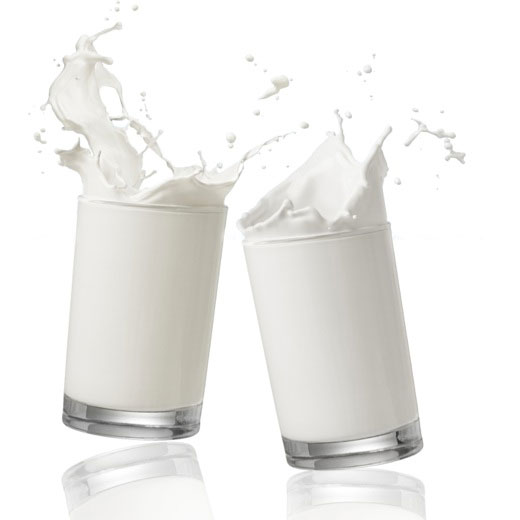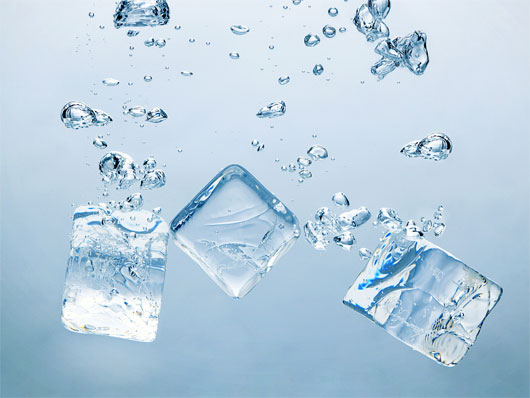The way to store milk is not broken even without a refrigerator
Centuries ago before the refrigerator was used, the Russians had an ancient habit of preserving milk that was not broken, that is . dropping a frog into a milk carton!
>>>Why is milk white?
Now in modern times, many people believe that this is just a fictional story. But researchers at Moscow National University, led by organic chemist Dr. Albert Lebedev, have pointed out that there may be some benefits to doing this, of course you will then be given a drink. Milk has been visited by frogs.

Photo: fitho.in
The ice bucket became the solution to preserve milk for consumers in the early to mid-19th century, and thus, the cold stone trade became a big business. New England and Norway are the main ice supplies. But wherever cold weather occurs, ice becomes a major export. Often made of tin or zinc and insulating materials such as sawdust, cork, or straw, iceboxes become popular and only obsolete when the refrigerator was born around the 1930s.
American inventor Jacob Perkins invented the first version of the refrigerator in 1834 when it discovered toxic ammonia compounds, when liquefied, had a cooling effect . But it wasn't until the late 1920s, when Freon refrigerants were developed by General Motors and DuPont as "non-toxic" coolants, replacing ammonia, that refrigerators began to be popularly used in consumption.
Although the ice is very popular in areas of Russia, but in some small Russian villages in the countryside, many people still do not know how to use iceboxes, so they have to find ways to cool everything to preserve them. And a habit has been formed, and continued until the 20th century, as described by Dr. Lebedev from his childhood memories: "People put a frog inside a milk carton. A frog small in it can help the milk not broken ".

This rather curious habit has inspired a study that may lead to an important knowledge of antibiotics. In 2010, scientists from the United Arab Emirates University reported that frog skin secretions have antibacterial and antifungal properties. Using animals from African countries, scientists studied compounds from frogs, such as antibacterial peptides and a sequence of amino acids.
After isolating these compounds, they began testing their ability to fight off bacterial infections. For example, "Iraqibacter" , a dreaded drug-resistant bacterial infection that has attacked wounded soldiers in Iraq, could be repelled by a compound found in the skin of a wild frog native to the North. America. Frog-borne substances may be able to fight off the famous MRSA staph skin infections.
In 2012, scientists from Moscow National University decided to go a step further by breaking down compounds and studying individual peptides. In a study entitled " Composition and antimicrobial activity of the skin-brown peptidome of Russian brown frogs" published in the Journal of Proteome Research in November 2012, scientists used frogs. Russian brown (this frog is edible and considered a dish), they extracted the substance by applying electrodes.
As a result, the scientists extracted a cocktail cup of 76 different peptide bonds. Michael Zasloff, now a professor at Georgetown University, but formerly a researcher at the National Institutes of Health said: "The amazing thing is that each frog offers a different cocktail. They are all different, and what's interesting is that they help fight off the bacteria that animals face. "

Photo: animalslook.com
Although the results are very promising, many scientists still doubt the real benefits. For example, Jun O. Liu, a professor of pharmacology at Johns Hopkins University of Medicine, stated in a reference to nature's "miraculous antibiotics": "There are natural substances that carry it works very well in the laboratory but then when applied to humans it is completely inactive or becomes toxic ".
Although all of this may or may not be useful to humans, starting centuries before the Russians seem to have adopted a method of putting frogs into milk to help the milk not break down and succeed. .
- How to arrange food in the refrigerator to keep it longer
- Technology reports when milk is broken
- The food you should not store in the refrigerator
- Should eggs be stored in a refrigerator?
- Should you store tomatoes in the refrigerator?
- Never put these foods in the refrigerator
- Who created the refrigerator?
- Minh froze the refrigerator does not ruin champagne
- Things to know about nut milk and health
- Time and how to store eggs and milk
- Tips to preserve food in the fridge
- Mitticool: Special refrigerator made of clay
 'Fine laughs' - Scary and painful torture in ancient times
'Fine laughs' - Scary and painful torture in ancient times The sequence of numbers 142857 of the Egyptian pyramids is known as the strangest number in the world - Why?
The sequence of numbers 142857 of the Egyptian pyramids is known as the strangest number in the world - Why? History of the iron
History of the iron What is alum?
What is alum? Why does milk reduce the effectiveness of antibiotics?
Why does milk reduce the effectiveness of antibiotics?  Why do Asians have a harder time absorbing milk than other races?
Why do Asians have a harder time absorbing milk than other races?  This type of wood is known as 'open-air gold': The Chinese royal family trusts it and uses it, rich people bring sacks of money to buy it!
This type of wood is known as 'open-air gold': The Chinese royal family trusts it and uses it, rich people bring sacks of money to buy it!  Doctors point out two main causes of milk poisoning
Doctors point out two main causes of milk poisoning  How did NASA research create a premise for formula milk?
How did NASA research create a premise for formula milk?  What is always kept by the Mongol cavalry in their cloaks and carried away to 'fight the east and clear the north'?
What is always kept by the Mongol cavalry in their cloaks and carried away to 'fight the east and clear the north'? 